“Those Left Waiting” is one of the first experiences we’ve participated in at CPH:DOX this year. A global live online documentary that brings audiences together with refugees around the world through the voice that matters most: theirs.
Years ago, the Department of Media and Communication at the London School of Economics and Political Science (LSE) published a research report on migration and the media to analyze the consequences of the media’s role in shaping imaginaries and politics of migration (Chouliaraki L., Georgiou M., Zaborowski R., 2017). The topic of migrants and of refugees was one of the most relevant at the time – present in news, movies, daily conversations all over the world – and it was not surprising to read some of the findings of this research and understand many of the events that followed – and this even though the analysis focused specifically on what was happening, media-wise, in specific European countries.
I certainly cannot go into the details of this research (you can download the whole report at this link, though) nor can I present a detailed survey of the academic analyses on this topic, which are extensive and noteworthy.
However, two aspects of the executive findings came to my immediate attention when I began writing this article: how “refugees and migrants were given limited opportunities to speak directly of their experiences” and how “media represent a key domain for Europe to encounter refugees and new migrants. The analysis of media representations is critical to understanding the responsibilities and consequences of cross-border mobility, settlement and protection”.
Then, years later, Covid happened and for 12 months it was as if refugees and migrants – or any other topic for that matter – no longer existed. Forgotten people in forgotten parts of the world. Not our problem anymore.
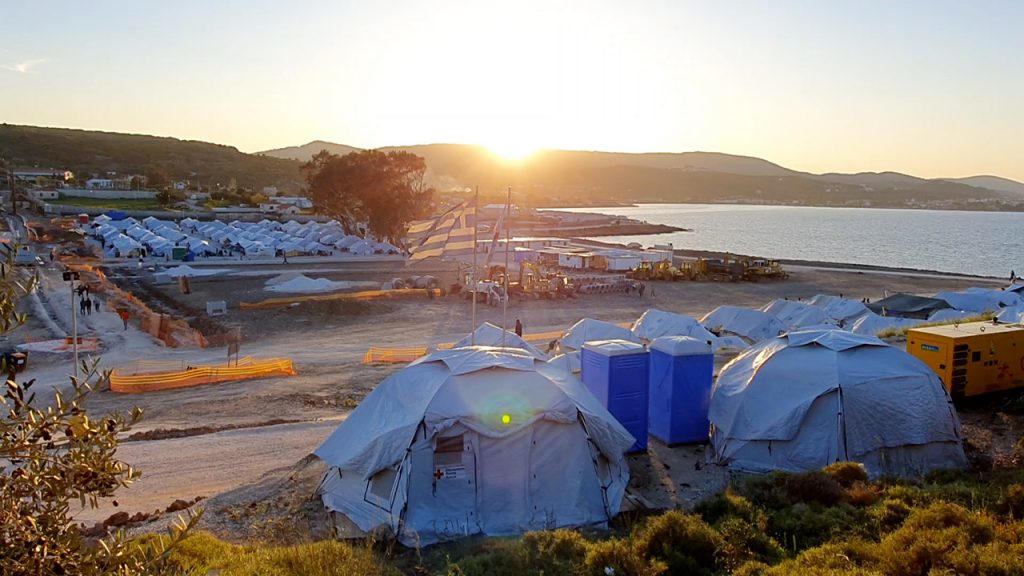
“Those left waiting” at CPH:DOX 2021
These days, Copenhagen is hosting the 18° Copenhagen International Documentary Film Festival (also known as CPH:DOX). Kicking off on April 21, CPH:DOX is one of the best-known and largest international events dedicated to documentary filmmaking, and in its rather long history it has been both “vanguard of a new global interest in artistic nonfiction” and “platform for works of art that create social and political change” (Indiewire, 2014), presenting life-changing productions such as director Joshua Oppenheimer’s The Look of Silence (CPH:DOX Award in 2014).
This approach characterizes not only the film section but also the interactive works presented in the Inter:Active lineup, which XRMust discussed with section curator Mark Atkin.
One of these works is Those Left Waiting, “the first global live online documentary co-directed and filmed by refugees, and edited in real time” (x).
The piece, which was created through the collaboration of refugees from all over the world (Greece, Indonesia, Kenya, Mexico, Jordan and Uganda), is a live experience that was different each time it was presented at the festival and allowed for something that the aforementioned research encouraged: having refugees “gain control on how their stories are told, shining a light on the harsh realities they face on a daily basis”.
Using an approach that Michael Beets, the director, has already pioneered with their previous work In the shadows it waits, several co-directors in refugee camps around the world film what is happening around them at that precise moment and the different scenes are put together and shown to the audience as they are happening.
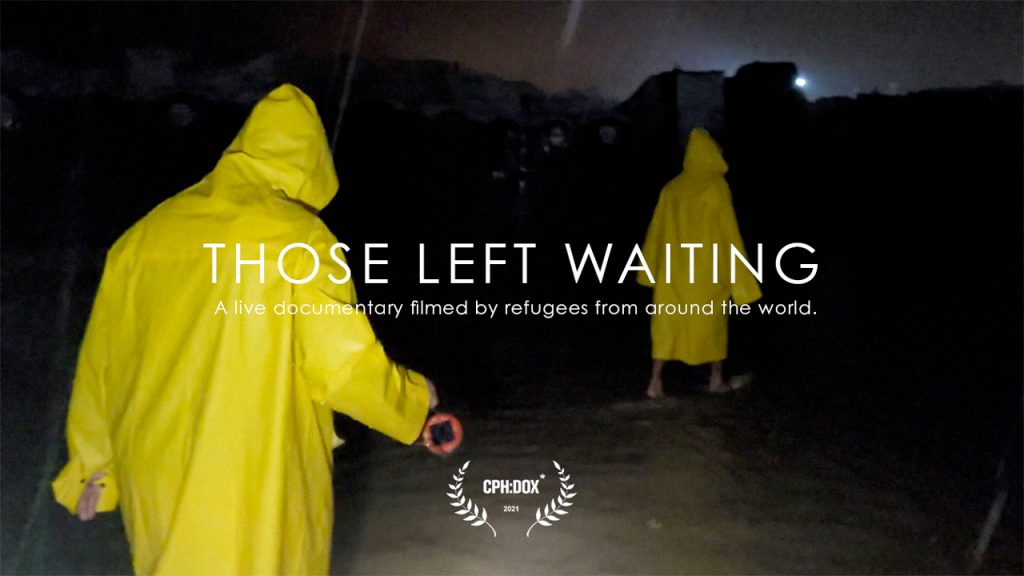
A way of making documentaries that doesn’t try to tell a story but lets the story tell itself. With risks, of course. Not only the obvious technical ones – which always seem the scariest – but also from a narrative point of view. Because – as I pointed out to Michael – everyday life isn’t about big events or big exciting things to tell and watch. Rather, it’s a set of normal, simple moments, routines that may be different from “ours” – but maybe not even that different, despite the fact that refugees are the ones living them.
In other words, daily life is mostly boring if it’s not our personal daily life (and sometimes even when it’s our own!).
Yet, therein also lies, in some ways, the strength of Those Left Waiting. Because it shows refugees as they should be shown. People who have faced unbearable obstacles and yet try to live a normal life, made up of normal moments in abnormal places and abnormal situations. And this is what makes them free. A concept, that of freedom, which was often mentioned by the various co-directors during the panel discussion after the premiere of the work.
I caught up with Michael Beets, director of Those Left Waiting, to talk about the piece. I had already met him in connection with one of my favorite VR works, The Unknown Patient (you can read the interview here) and last Summer I took part in the “live experiment” that was In the shadows it waits. Here’s what Michael told us about Those left waiting.
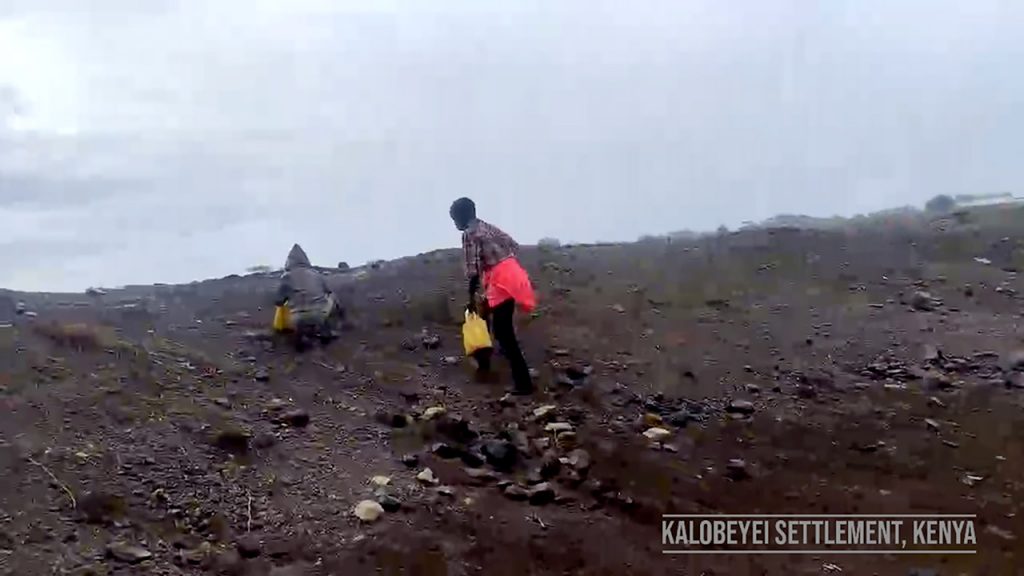
Talking about refugees using a new storytelling
AGNESE – As you know, my friends and I – in a very professional way that included popcorn and screaming – joined your previous work “In the shadows it waits”. That work was a fictional story about isolation. “Those left waiting” is a documentary that uses a similar approach but on a completely different content. When did you realize that what you did in “In the shadows it waits” could be replicated to tell something different, like a documentary?
MICHAEL BEETS – In the Shadow it Waits was really the start of it all – it was supposed to be something quite loose and fun, a covid pass time. After a couple of rehearsals we started to quickly realize this real potential in delivering film-like experiences performed, shot, and edited live and we really pushed the project to look and feel like a horror film, despite it being all live! …and we ended the run with a massive screening at Raindance Film Festival!
Simultaneous to that, I was talking to Christian Pazzaglia – the co-producer on Those Left Waiting – and we were interested in exploring this idea of isolation further, but in a documentary form, so that we step into the private lives of others, but told from their perspective.
It dawned on us that perhaps for the first time, the world was going through an experience that could build empathy towards the refugee crisis around the world. The technology I use in the live films enables anybody in the world with a mobile phone and an internet connection to log into my system. So we thought, why don’t we find refugees in camps around the world and give them the opportunity to show us their worlds, from their perspective, which is something we never see. And the project grew from there.
A. – What did you learn from that first work and how did you apply it to this new production?
M. B. – There is so much I can discuss about this. The key point I think would be that I had a very strong idea on how we can approach the process both technically and logistically from the start. A project like this needs a good deal of technical workshopping with the creatives so that they can feel comfortable with that side of things and they can feel free and be open to creativity.
The creators- our refugee participants- had to be both cameraman and director of their own stories. At the end of the day this project relies on one main variable – internet connections. This project was created in refugee camps, with average connections at best. For some of our creators, they had to travel over 40 mins just to get to an area where they could film. I strongly believe that the internet is a very basic human right and for most refugees around the world, it is expensive and average. So although this project can’t exist without it, it also highlights this point in the grainy and sometimes glitchy imagery.
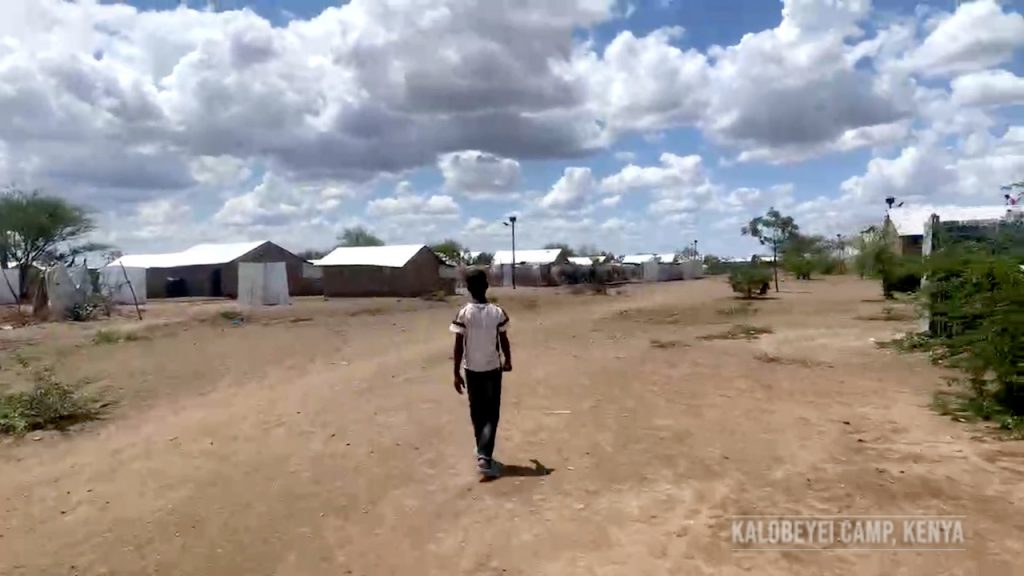
On creating Those left waiting
A. – What are the main steps you take to create a live piece like this?
M. B. – The first step was to find refugees in camps around the world who would be interested in the project. It took over 2 months to find our team, and that’s mostly thanks to some amazing organisations who work inside the camps. Organisations like Refocus Media Labs, Artolution and CS Media. They introduced us to people who they think might be interested in the project, and at the same time I scoured facebook pages, and found 3 of the 6 creators that way.
We divided the project into three stages with a week given to each stage. Week 1 was tech workshops, and finding solutions for internet issues, Week 2 was brainstorming and doing very basic runs to show them what this project is and how it works. Week 3 was the creative week where they started to experiment and find their voice.
The aim for when we went live was that there were no technical questions, and that they understood how to troubleshoot anything that may come up, so that they can instead just focus on the situation around them, and then respond to those events in real-time.
A. – What were the biggest challenges you encountered filming Those Left Waiting?
M. B. – We had to be very flexible with everyone’s unique situation and be respectful of that.
Every day had a challenge. For example, I remember during one workshop I was waiting online at 2am for the super talented Amina Hortence Rwino, our creator in Kakuma Refugee Camp, and she sends me an intense video of this river that suddenly overflowed and broke through the banks on both sides. The message read “I don’t think I can make it today”.
The project was full of daily challenges. Although tough moments, they’re also a stark reminder of the situation they’re all in. To contrast that, I remember one night, Victor Aluonzi, our creator in Bibi Bibi Refugee settlement in Uganda logged into my system and the first thing I saw was over 100 children in a tent singing a song – that really touched me. I was constantly invited into these precious and intimate moments that were happening in real-time and I got to just watch and reflect.
The importance of letting the story tell itself
A. – During the panel, one of your teammates used an expression that I loved to describe Those left waiting: “a kaleidoscopic view of what we see in the media”. Could you comment on that?
M. B. – It comes down to what I said before about how the media portray refugees. There are over 80 million people who have been forcibly displaced and 26 million of those are refugees. What we see in the media is from the perspective of the cameraman and journalists who enter those situations. What we aim here is for the refugees to be in full control over what we as an audience experience and to offer a kaleidoscope view of the worldwide situation in a true observational format.
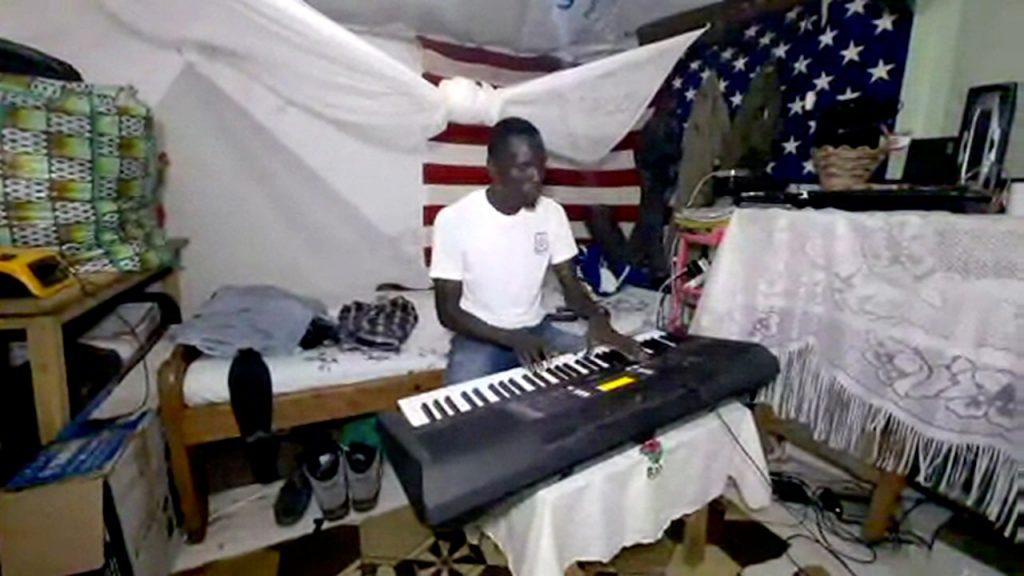
A. – Indeed “Those Left Waiting” invites the story to speak to us, instead of letting us speak about the story. A beautiful concept, but also a complex one: most of the time life is made up of simple moments, so that’s what you find yourself recording. They are the most relevant, but when you’re telling them using media it can be tough to make them interesting. What is your point of view on this?
M. B. – This project isn’t trying to force too much on the audience. It exists in images and understanding of their situation. There is no talking to camera, and only a couple of title cards that better explain the subjects the creators are following. I’d say it’s more poetic. It’s offering the audience an opportunity to connect and share very real and intimate moments with refugees and their situation and for the audience to reflect on their own lives through that.
Our aim was always to be as observational as possible, and in many ways I think we’ve stumbled on a form that can’t be more authentic than this. Every night is different, and every night offers a new glimpse into their world. We are so used to flashy Netflix style documentaries, that I think we often forget that documentaries can be something else, they can simply document life.
On living this experience and on the future
A. – What was it like for you to meet those stories and work with so many different people?
M. B. – For me, it’s been an unbelievable journey for all the obvious reasons. However, one of the things I take away the most, is that they have all personally told me how much this project has inspired them, each in their own way. I’ve also watched them grow as filmmakers in the weeks we collaborated together. We have all become friends and are connected to each other, and I’m fortunate they took that risk with Christian and myself.
A. – Do you have plans for Those Left Waiting after CPH:DOX?
M. B. – Yes, big plans. We want to make a difference with this project, and hopefully you will hear more soon 🙂
A. – We met because of “The Unknown Patient” which to date is one of the VR works I loved the most . Can we expect more VR projects from you?
M. B. – Yes! I’m working on a new VR project with Oriane Hurard (Atlas V / Les Produits Frais). it’s titled LET GO, and we should have it completed by the end of the year. It’s an interactive VR series that looks at mourning rituals from around the world and the first episode looks at the Japanese ritual of Nezunoban.
Those left waiting is a work directed by Michael Beets and produced by Christian Pazzaglia. Co-creators of the piece are:
- Greece: ReFOCUS Media Labs Collective
- Indonesia: Shams Hussaini
- Kenya: Hortence Amina Rwimo & Christian Baobab
- Mexico: Marian Pérez Guerra
- Jordan: Samir Al-Ghafary
- Uganda: Aluonzi Victor
The team put up for grabs an NFT, the proceeds of which will go to the refugee filmmakers and to additional films featuring them. The main NFT is now sold, but there are a few editions still available.
Here‘s the page for Those Left Waiting on the XRMust database.

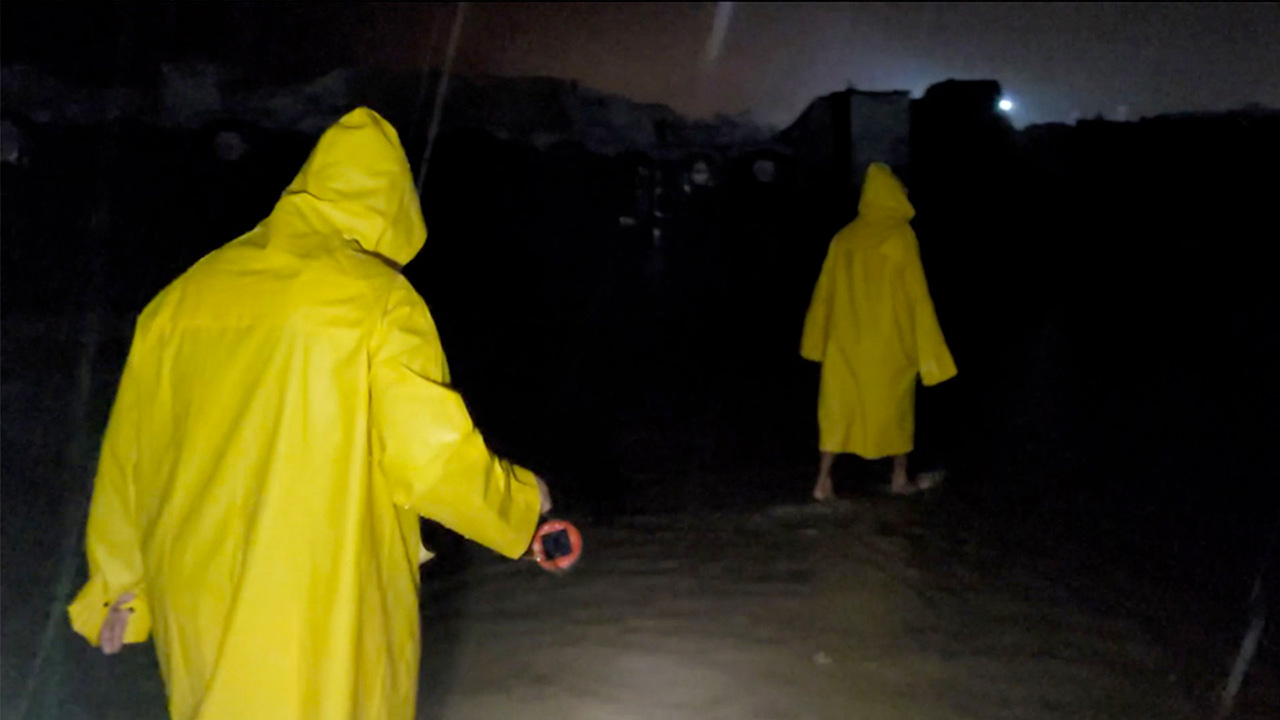

Leave a Reply
You must be logged in to post a comment.